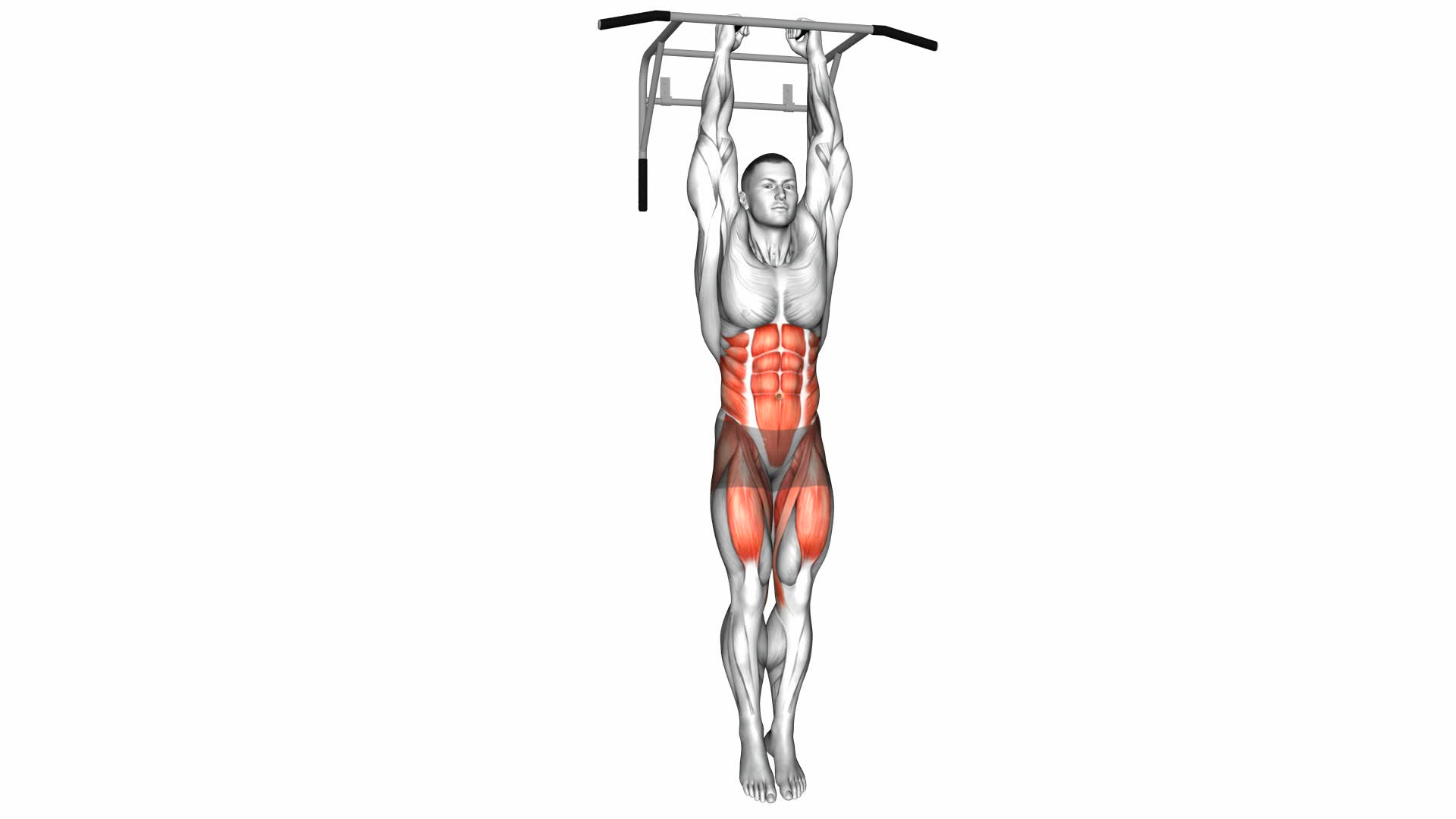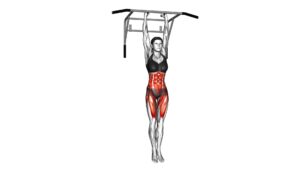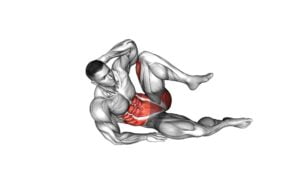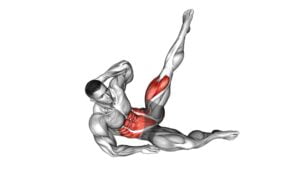Hanging Oblique Knee Raise – Video Exercise Guide & Tips

Looking to strengthen your obliques and core? The Hanging Oblique Knee Raise is a great exercise to add to your routine.
Watch This Exercise Video
In this video exercise guide, we'll show you the proper technique, common mistakes to avoid, and variations to increase difficulty.
Plus, we'll share some tips to help you get the most out of your workout.
Get ready to feel the burn and achieve those toned abs!
Key Takeaways
- Enhanced core strength
- Improved stability
- Supports spine and maintains proper posture
- Contributes to improved athletic performance
Benefits of the Hanging Oblique Knee Raise
You can experience enhanced core strength and improved stability through the Hanging Oblique Knee Raise. Core strength is vital for overall fitness and daily activities, as it supports your spine and helps maintain proper posture. Strong core muscles also contribute to improved athletic performance and reduced risk of injuries.
The oblique muscles play a crucial role in core stability. These muscles, located on the sides of your abdomen, help rotate and stabilize your torso. By targeting the obliques with the Hanging Oblique Knee Raise, you can strengthen these muscles and improve your overall core stability.
This exercise specifically targets the obliques by requiring you to lift your knees towards your chest while hanging from a bar. As you lift your knees, you engage your obliques to initiate the movement, effectively strengthening and toning these muscles.
Proper Technique for Performing the Exercise
To properly perform the Hanging Oblique Knee Raise, begin by hanging from a bar with your arms fully extended. Make sure to have a firm grip on the bar, with your palms facing away from you. Keep your body straight and engaged throughout the exercise.
To execute the exercise, start by bending your knees and bringing them up towards your chest. As you do this, twist your torso to the side, aiming to bring your knees towards your opposite shoulder. This movement engages your oblique muscles, which are located on the sides of your abdomen.
It's important to maintain control and avoid swinging during the exercise. Swinging can decrease the effectiveness of the movement and increase the risk of injury.
Common mistakes to avoid include using momentum to swing your legs up, not fully engaging your core muscles, and not twisting your torso enough to target the obliques.
If you want to add more challenge or variation to the exercise, you can try straightening your legs and lifting them up in a V-shape instead of bending your knees. This variation increases the difficulty and places more emphasis on your lower abs.
Remember to always listen to your body and start with a weight and difficulty level that you're comfortable with. Proper form and technique are crucial for getting the most out of the Hanging Oblique Knee Raise and preventing injuries.
Common Mistakes to Avoid
Maintaining control and avoiding swinging is crucial when performing the Hanging Oblique Knee Raise, as it decreases the effectiveness of the exercise and increases the risk of injury. To ensure proper form and maximize your results, it's important to avoid these common mistakes.
One common mistake is using momentum to swing your legs up instead of relying on your core muscles to lift them. This not only takes away from the targeted muscles but also puts strain on your lower back. To avoid this, focus on engaging your abs and using a controlled and slow movement to lift your knees towards your chest.
Another mistake to avoid isn't fully extending your legs at the bottom of the movement. By not straightening your legs, you aren't fully engaging your oblique muscles. Make sure to fully extend your legs before starting the next repetition to get the most out of the exercise.
Lastly, it's important to avoid arching your back during the Hanging Oblique Knee Raise. This can lead to lower back pain and potential injury. Keep your back straight and your core engaged throughout the exercise.
Variations to Increase Difficulty
To increase the difficulty of the Hanging Oblique Knee Raise, try incorporating variations that challenge your core muscles even further. One such variation is the weighted hanging knee raise. This exercise involves using ankle weights or a weighted vest to add resistance to the movement. By increasing the load on your core muscles, you'll force them to work harder and become stronger.
Another variation to consider is the hanging oblique leg raise. This exercise specifically targets the oblique muscles, which are located on the sides of your abdominals. To perform this variation, start by hanging from a pull-up bar with your legs straight. From there, lift your legs to the side, aiming to bring your knees towards your elbows. This movement engages the oblique muscles and challenges them in a different way than the traditional hanging knee raise.
Incorporating these variations into your workout routine can help you take your Hanging Oblique Knee Raise to the next level. Remember to start with lighter weights and progress gradually to avoid straining your muscles. Keep challenging yourself and you'll see improvements in your core strength and overall fitness.
Tips for Getting the Most Out of Your Workout
Maximize your workout by incorporating these tips to get the most out of your Hanging Oblique Knee Raise. By following these guidelines, you can increase the intensity of your workout and maximize calorie burn.
Firstly, focus on proper form and technique. Maintaining proper form throughout the exercise ensures that you're targeting the correct muscles and maximizing the effectiveness of each repetition. Engage your core muscles and keep your body stable throughout the movement.
Secondly, vary the speed and tempo of your reps. Performing slow and controlled movements will engage your muscles more effectively and increase the intensity of the exercise. Additionally, incorporating explosive movements can further challenge your muscles and increase calorie burn.
Next, consider adding resistance to your Hanging Oblique Knee Raise. You can use ankle weights or a weighted vest to make the exercise more challenging. The added resistance won't only increase the intensity of your workout but also help build strength and muscle.
Lastly, don't forget to incorporate rest days into your workout routine. Rest is crucial for muscle recovery and growth. By allowing your body to rest and repair, you'll be able to maximize the benefits of your workout and avoid overtraining.
Frequently Asked Questions
Can the Hanging Oblique Knee Raise Help With Reducing Love Handles?
The hanging oblique knee raise is an effective core exercise for reducing love handles. By targeting the oblique muscles, this exercise helps strengthen and tone the sides of your waistline.
Incorporating hanging oblique knee raises into your workout routine can provide numerous benefits. Not only does it help with reducing love handles, but it also improves overall core strength, stability, and balance.
Is It Necessary to Have a Strong Upper Body to Perform This Exercise?
To perform the hanging oblique knee raise, having a strong upper body isn't necessary. However, a strong core is important. This exercise targets the oblique muscles, helping to reduce love handles.
It also strengthens the abdominal muscles and improves stability. Incorporating the hanging oblique knee raise into a balanced workout routine can provide a variety of benefits, such as improving overall core strength and increasing muscle definition in the midsection.
Can the Hanging Oblique Knee Raise Be Modified for Beginners?
Yes, the hanging oblique knee raise can be modified for beginners.
There are several beginner-friendly variations that can help you build strength and stability before progressing to the full exercise.
These modifications include performing knee tucks instead of knee raises, using a resistance band for assistance, or starting with bent knees instead of straight legs.
How Often Should the Hanging Oblique Knee Raise Be Performed for Optimal Results?
To get the best results from the hanging oblique knee raise, it's important to know how often to perform it. This exercise targets the oblique muscles and can be a great addition to your workout routine.
For optimal results, aim to do the hanging oblique knee raise 2-3 times a week. Make sure to perform the exercise with proper form, engaging your core and avoiding swinging or using momentum.
Are There Any Alternative Exercises That Target the Same Muscle Group as the Hanging Oblique Knee Raise?
If you're looking for alternative exercises that target the same muscle group as the hanging oblique knee raise, there are a few options you can try.
Side plank with leg lift, Russian twists, and bicycle crunches are all great exercises that engage the obliques.
These exercises provide a challenging workout and help to strengthen and tone your oblique muscles.
Incorporating these exercises into your routine can help you achieve optimal results and target the desired muscle group.
Conclusion
The hanging oblique knee raise is a highly effective exercise for targeting the oblique muscles. By properly performing this exercise and avoiding common mistakes, you can maximize its benefits.
Additionally, incorporating variations to increase difficulty and following tips for an optimal workout will help you achieve the most out of this exercise.
Give it a try and start sculpting your obliques today!

Author
Years ago, the spark of my life’s passion ignited in my mind the moment I stepped into the local gym for the first time. The inaugural bead of perspiration, the initial endeavor, the very first surge of endorphins, and a sense of pride that washed over me post-workout marked the beginning of my deep-seated interest in strength sports, fitness, and sports nutrition. This very curiosity blossomed rapidly into a profound fascination, propelling me to earn a Master’s degree in Physical Education from the Academy of Physical Education in Krakow, followed by a Sports Manager diploma from the Jagiellonian University. My journey of growth led me to gain more specialized qualifications, such as being a certified personal trainer with a focus on sports dietetics, a lifeguard, and an instructor for wellness and corrective gymnastics. Theoretical knowledge paired seamlessly with practical experience, reinforcing my belief that the transformation of individuals under my guidance was also a reflection of my personal growth. This belief holds true even today. Each day, I strive to push the boundaries and explore new realms. These realms gently elevate me to greater heights. The unique combination of passion for my field and the continuous quest for growth fuels my drive to break new ground.







